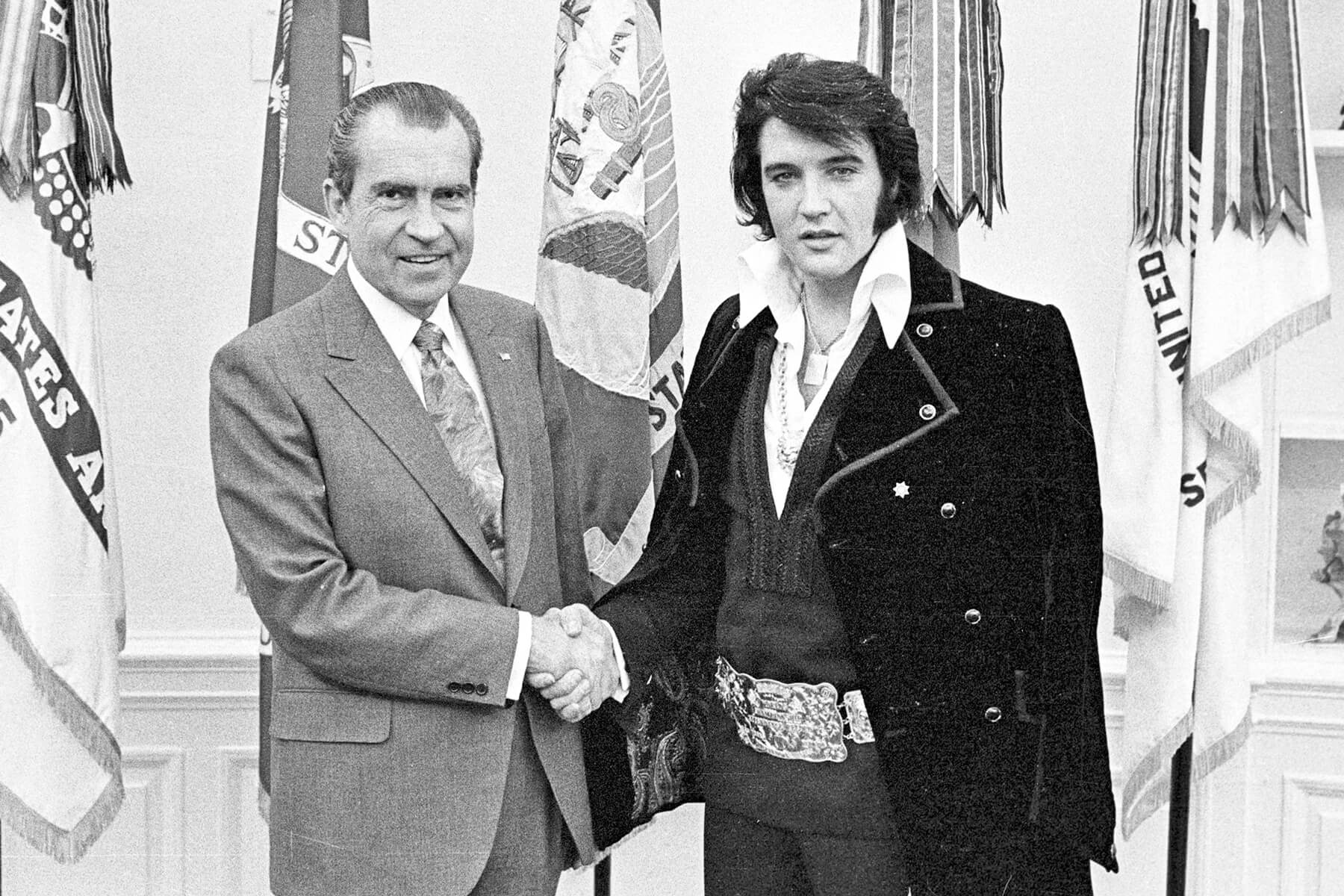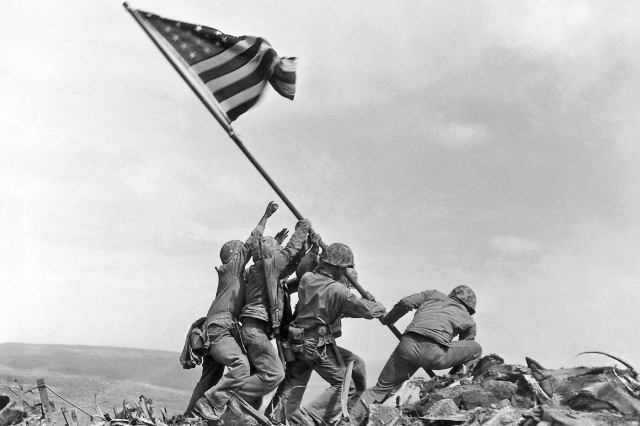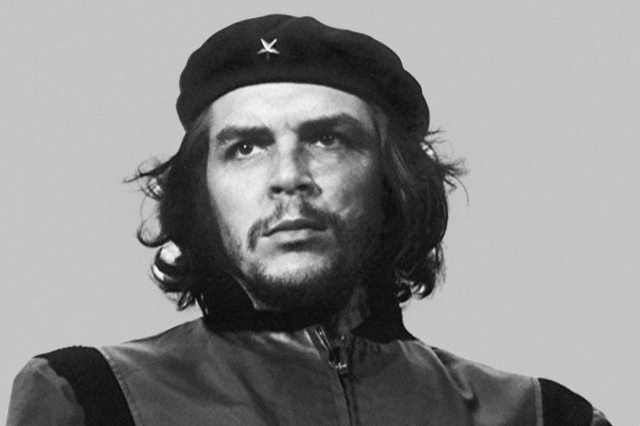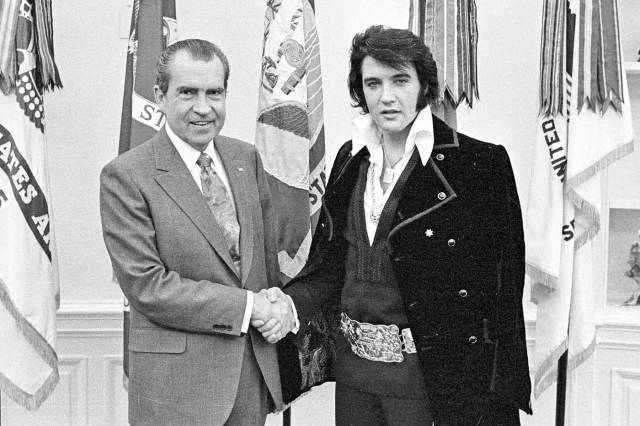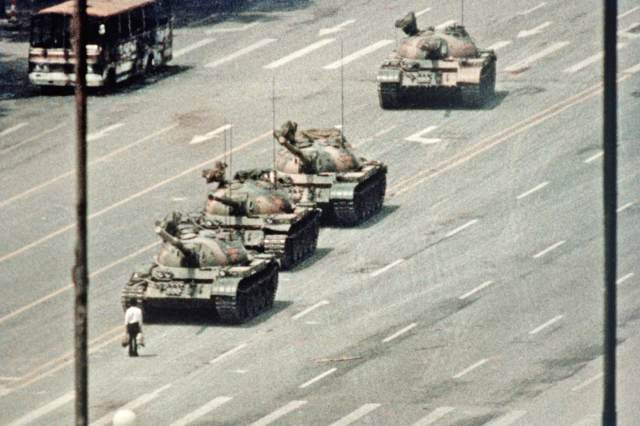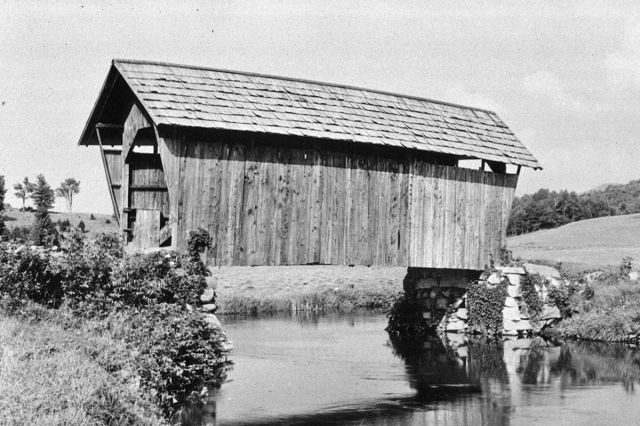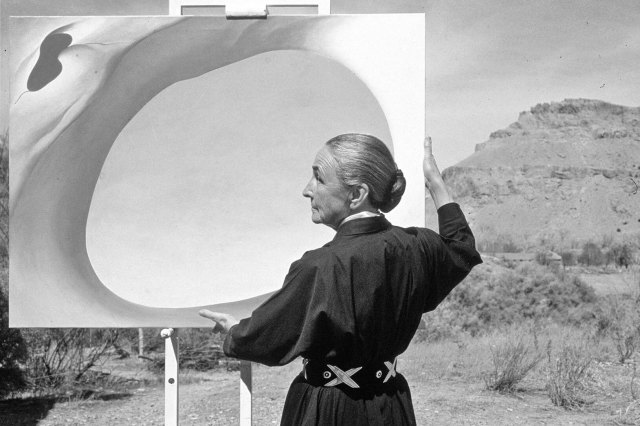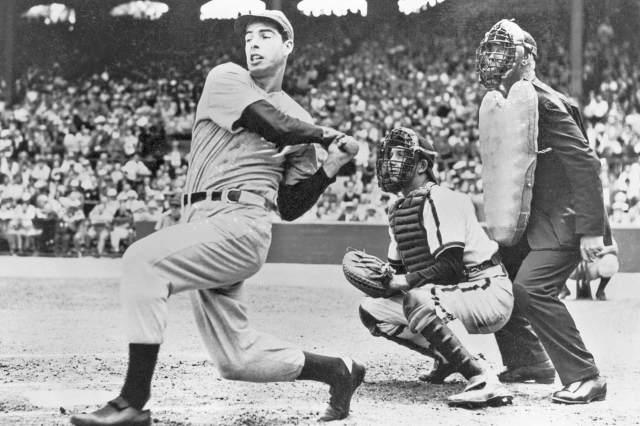5 of the Most Famous Photographs in History
Photographs allow us to witness history with our very own eyes, immortalizing brief moments in time that are worth preserving — be it a mother struggling during the Great Depression or a handshake between Elvis Presley and Richard Nixon. Each image has a story behind it that helps explain why those moments maintain their appeal all these decades later. Here are some of the most famous photographs in recent history, and why they matter.

“Migrant Mother” (1936)
In March 1936, photographer Dorothea Lange captured what many consider to be the most recognizable photo from the Great Depression. The image, titled “Migrant Mother, Nipomo, California,” features a 32-year-old farmworker and mother of seven who was later identified as Florence Owens Thompson. The photograph depicts Thompson with a forlorn look on her face as she gazes past the camera. Three of her children are also present in the photo: an infant in her lap, and two older children burying their faces in Thompson’s shoulders. When the photo was first published, however, her identity remained anonymous.
At the time, Lange was working for the Farm Security Administration, a federal agency meant to help farm workers who were displaced during the Dust Bowl. In 1960, Lange recalled how she came across a woman huddled underneath a tent inside a camp of migrant pea pickers, and chose to approach her, “as if drawn by a magnet.” The woman — Thompson — told Lange that her family had been surviving on frozen veggies and dead birds, but it was only decades later that more information was finally uncovered.
In 1978, a reporter at the Modesto Bee tracked down Thompson and confirmed she was the subject of “Migrant Mother.” With her identity revealed, Thompson admitted that she viewed the photograph as something of a curse, as she never received royalties for the use of her likeness. It also became clear that Thompson wasn’t your typical Dust Bowl refugee as initially thought, but rather a woman of Native American heritage who was displaced from tribal Cherokee lands in Oklahoma. She also noted that the camp she set up in the migrant community was only temporary, as she was just waiting there while the family car was being fixed nearby. Toward the end of Thompson’s life, people sent donations to her family to help cover the cost of the matriarch’s medical bills, and many wrote letters saying how much the image of Thompson inspired them. These gestures allowed the family to reconsider the legacy of the photograph, which they began to view with a sense of pride.





